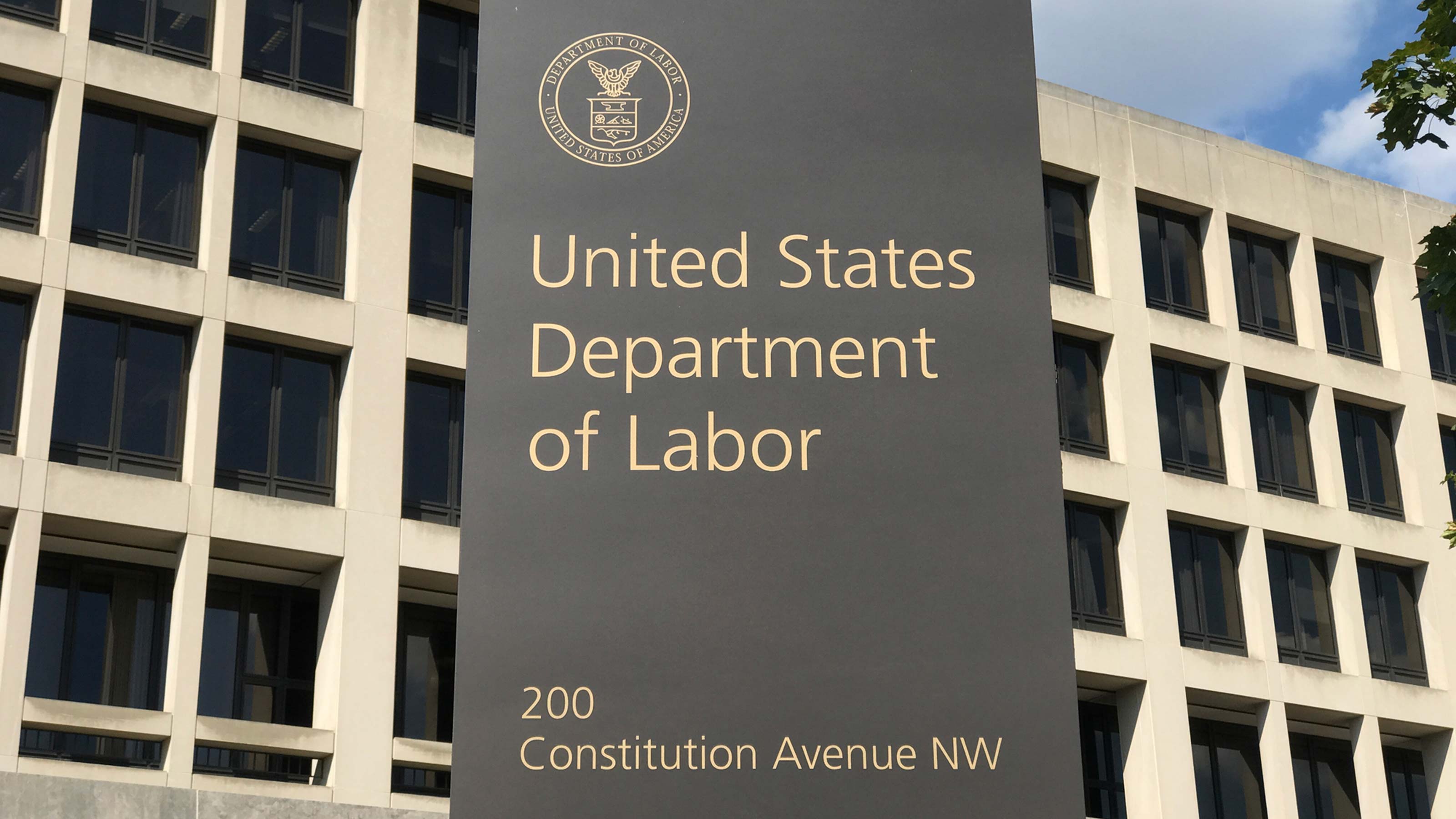The Basics of Unemployment Benefits: Who Qualifies, How to Apply, How Much You’ll Get
Unemployment insurance is a joint state and federal program that provides those out of work with temporary yet steady income to help them financially. In a big shift, the self-employed now qualify for benefits.


One year after the novel coronavirus pandemic began crippling the U.S. economy – especially the job market – the numbers remain discouraging: 18.2 million Americans were still filing for weekly unemployment benefits as of late February; 770,000 workers filed initial unemployment claims in the week ended March 13; and the unemployment rate – while improving slightly – has plateaued around 6.2%.
For many laid-off workers, this may be their first time dealing with the unemployment-benefits system, a joint state and federal program that provides those out of work with temporary yet steady cash payments to help them financially while finding a new job.
The good news: A new round of stimulus coverage passed by Congress earlier this month – known as the American Rescue Plan Act of 2021 – further extends the period for those who’ve filed for unemployment benefits to receive supplemental weekly federal benefits.
Let us help you navigate the changing unemployment-benefits system to get you the help you deserve. The sooner you apply, the better.

Who Qualifies for Unemployment Benefits?
Unemployment benefits are available to workers who are unemployed through no fault of their own, such as a layoff. Those fired for cause (such as misconduct), or who leave voluntarily or refuse an offer for work, need not apply.
In March 2020, when the coronavirus first disrupted the economy, Congress granted unemployment benefits to workers who weren’t previously covered. Those who now qualify include:
- Workers permanently or temporarily laid off due to coronavirus measures
- Workers whose employers reduced their work hours due to coronavirus measures
- Self-employed workers who have lost income due to coronavirus measures
- Workers quarantined and unable to work due to coronavirus
- Workers unable to work due to risk of exposure to coronavirus
- Workers unable to work while caring for a family member due to coronavirus
Each state, district and territory sets its own guidelines for who is eligible for unemployment benefits and how much they’ll receive. You must meet your state’s criteria for wages earned or time worked during an established period, known as a “base period,” which is usually the first four out of the last five completed calendar quarters before the time that your claim is filed, according to the U.S. Department of Labor. (Due to changes in the law over the past year, some states may not have updated their published guidelines yet. If you think you’re eligible, you should apply now in the state where you worked.)
The general rule of thumb is that unemployment benefits are based on a percentage of one’s earnings – roughly between 40% and 60% – over a recent 52-week period, and paid out weekly over a period of between 12 to 28 weeks, depending on the state. (Federal stimulus measures have extended the benefits period. More on that below.)
If you’ve received a severance package from your former employer – usually in the form of a lump-sum payment – it’s important to check with your state’s labor department to see if you qualify for unemployment insurance. Some states, such as California, don’t disqualify you from receiving benefits if you have severance pay, be it a lump sum or in regular installments. But Texas prohibits people from qualifying for unemployment benefits while receiving most types of severance pay.

How to Apply for Unemployment Benefits
Contact your state’s unemployment insurance program office immediately upon losing your job, especially in light of the sharp increase of claims filed throughout the country over the past year due to the pandemic. Check with the office to determine the preferred method of registering in the system, be it online or by phone. While doing so in person was traditionally an option (that’s how we got “unemployment lines”), it’s a bad idea now.
Keep in mind that registering your claim for unemployment benefits takes time to process, especially in light of the COVID-19 pandemic, so budget your pocketbook accordingly before your first payment appears. According to the U.S. Labor Department’s CareerOneStop site, it usually takes two to three weeks after filing your claim to receive your first benefit check, but that estimate was pre-pandemic. Many state unemployment offices continue to struggle to keep up with the spike in demand.
Some states, and the District of Columbia, normally require a one-week waiting period. In that case, you will file your first unemployment claim (in which you list the jobs you applied to that week), but you won’t receive a payment. Rather, your first payment would apply to the second week of your unemployment claim. Many states, including California, Hawaii and New York, have waived their waiting period as a result of the recent pandemic. And, under the new $1.9 trillion American Rescue Plan, the federal government will continue to provide temporary full funding for the first week of unemployment (more below). Check your state’s site about changes to the waiting period.

How the Latest Coronavirus Stimulus Package Changes the Rules for Unemployment Benefits
Under the new $1.9 trillion American Rescue Plan Act of 2021, which was signed into law by President Joe Biden in early March, American workers who are unemployed will receive federal unemployment benefit payments of $300 per week – on top of standard benefit levels – through September 6, 2021.
What’s more, as much as $10,200 of unemployment benefits received in 2020 will be exempt from tax for households whose incomes were less than $150,000. (Note: The IRS is working on 2020 tax form and software updates to account for the new exemption. If you already filed your 2020 tax return, don't rush to file an amended return – wait until the IRS issues instructions. More details below.)

Get Your Paperwork In Order Before Filing for Unemployment Benefits
The better prepared you are, the faster your unemployment claim will be processed (and happier is the rep who processes your claim). Assemble supporting paperwork as if you’re going to the Department of Motor Vehicles — but with the reward of a paycheck.
Your Social Security number alone is not enough (but it’s a start). You will also need to provide the name, address, phone number and dates of employment from your most recent employer. For most people, this is all you need. Some states, such as Utah, require a driver’s license as a form of identification. If you’re not a U.S. citizen, but legally authorized to work in the U.S., you will need to provide your Alien Registration Number (that eight- to nine-digit USCIS number). For ex-military, have handy your DD214 form, which is your certificate of release or discharge from active duty (if you don’t have it, you can request a copy through the U.S. Department of Veterans Affairs’ milConnect website). Former federal employees will need to provide either their Standard Form 8 (SF-8) or Standard Form 50 (SF-50). If you receive, or will receive, severance pay from your former employer, you will need to provide documentation detailing your payout. Qualified pension recipients should have their pension documentation at the ready.

How to Calculate Your Unemployment Benefits
Each state’s unemployment office provides its own calculator – and explanation – to help you determine how much you will receive on a weekly basis. Formulas can be as easy as taking the highest quarter of wages in your base period and dividing it by the number of weeks the state grants you unemployment compensation; more complex formulas incorporate additional factors.
Massachusetts’ Department of Unemployment Assistance, for example, provides an unemployment benefits determination calculator in which you enter the total wages you received in the past four quarters. Upon entering the quarterly amounts, the calculator computes your weekly pay and the number of weeks you’ll be paid unemployment benefits (26 weeks, in the case of the Bay State).
Keep in mind that these calculators are intended to help you estimate your benefits and are intended only for advisory purposes. Ultimately, it will be your state’s computer system that will crunch your numbers and determine your official weekly amount. Since benefits for the self-employed are a new phenomenon, don’t expect estimates.

Yes, Unemployment Benefits Are Taxed. Sorry!
Discovering that your unemployment benefits are taxed may not be nearly as shocking as the news of your job loss, but it can be just as tough to accept. The reality is that unemployment benefits are a form of income, and that income is taxable at both the federal and state level.
But a special tax break under the new American Rescue Plan allows Americans who received unemployment benefits in 2020 the ability to exempt up to $10,200 in unemployment benefits from federal income tax for households with an adjusted gross income under $150,000. If you're married, you and your spouse can each exclude up to $10,200 of unemployment compensation.
Yet there's one big question surrounding this new tax exemption: How do you claim it? The IRS doesn't have an answer for everyone yet – but it's working on it. How to handle the new tax break will also depend on whether or not you already filed your 2020 tax return. If you haven't filed yet, the IRS has updated the Schedule 1 (Form 1040) instructions and provided an Unemployment Compensation Exclusion Worksheet for paper filers. It's also working with tax software companies to update their products so that users will be able to claim the exemption on their 2020 tax returns. So, if you received unemployment compensation last year, you might want to wait a little bit longer before using one of these software products to complete your 2020 return.
If you already filed your 2020 tax return, the IRS is working on a way to automatically issue refunds for the $10,200" exemption. That would prevent the need to file an amended return to claim the new tax break if you filed your 2020 return before the exemption was enacted.
What’s more, just because the federal government is waiving taxes on the first $10,200 of your 2020 unemployment benefits, that doesn't mean your state will too. Although some states don't tax, or don't fully tax, unemployment compensation, most states do. However, a handful of states exempt unemployment compensation just for 2020 and/or 2021 to help residents impacted by the pandemic. Other states are adopting the $10,200 exemption for state tax purposes. To see how your state treats unemployment benefits, see Taxes on Unemployment Benefits: A State-by-State Guide.
Normally, you have the option to have as much as 10% of your weekly unemployment benefits withheld for federal taxes. Taxpayers will receive a Form 1099-G from the IRS, which shows the amount received and the amount of any federal income tax removed from your benefits. Taxes may be withheld from unemployment benefits at the request of the benefits claimant by using Form W-4V, while others who choose not to have their taxes withheld may need to make estimated tax payments during the year, according to the IRS.

File for Unemployment Benefits Where You Work, Not Where You Live
You should file your claim in the state where you worked. For instance, for residents of Maryland and Virginia who work in the District of Columbia, it is required that you file your claim with the District of Columbia.
If you worked in multiple states, check with the unemployment office of the state you currently live in for information on how to file your claim appropriately with other states.

You Can Get Unemployment Benefits Even If You Still Have Some Work
Obviously, if you’re still working full-time, then you’re not unemployed and, therefore, not eligible for unemployment benefits. But if, say, you’ve lost one job but kept another, or if you get paid for a temporary assignment, you can still collect unemployment benefits. However, they will be reduced accordingly to compensate for the additional income you’re receiving. You must report your gross wages earned each week, not just your take-home pay.
In Missouri, for example, partial unemployment benefits are calculated by taking your weekly wages and subtracting $20, or 20% of your weekly benefit amount, whichever is greater. That amount is your deduction, which is then subtracted from your weekly benefit and rounded down to an even dollar amount. Any withholding for federal taxes and such is taken from this amount.
Although state policies vary, as a general rule, if you perform part-time or temporary work, which includes self-employment, you are still required to fulfill your state’s requirement of providing a list of new job searches each week. The District of Columbia, for example, requires listing two job applications each week (although this requirement has been suspended during the coronavirus pandemic; filers aren’t required to list two applications, for now). And your state wants you to have the time to actively look for full-time employment, with the selfish goal of stopping payments of unemployment benefits to you when you return to work full time.

Budget for Life on Unemployment Benefits
Now that you’ve calculated how much you'll receive in unemployment benefits on a weekly basis, there’s no better time to put pen to paper and budget for the next few months. “This is an important time to determine your fixed and discretionary expenses,” says Lisa Brown, chief strategy officer at financial planning firm Brightworth in Atlanta. Brown recommends speaking with your mortgage company if you’re a homeowner and inquiring with creditors, including credit card companies, to see if there are special programs for those whose jobs are impacted by the COVID-19 pandemic and to see if you’re eligible to defer or reduce monthly payments above and beyond what the government is proposing.
Creditors in particular want you to know that they’re concerned about your financial wellbeing, and your ability to pay your bills. You’ve likely seen e-mails from mortgage services, credit card companies and banks expressing their commitment to help you stay on top of your finances. While it’s better to maintain your monthly payments pre-virus and pre-unemployment, it might be worth it to reach out and inquire about your options to reduce your minimum monthly payments.
Brown also recommends that you look at how much money you have in your bank, and stretch it out as much as possible to avoid tapping into retirement accounts (which could come with a significant tax penalty).

More Resources for Unemployed Workers From the Labor Department
The U.S. Labor Department's CareerOneStop site provides links to each state’s relevant agency to speed your path to filing claims for unemployment benefits. The site also boasts a wealth of resources aimed at getting you back to work: education/training courses, job search resources and scores of toolkits for researching careers.
Profit and prosper with the best of Kiplinger's advice on investing, taxes, retirement, personal finance and much more. Delivered daily. Enter your email in the box and click Sign Me Up.

